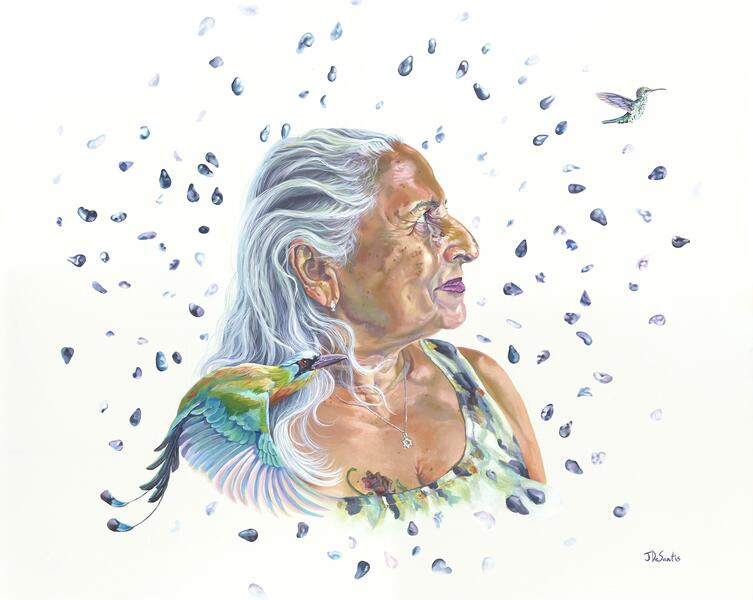Work samples
-
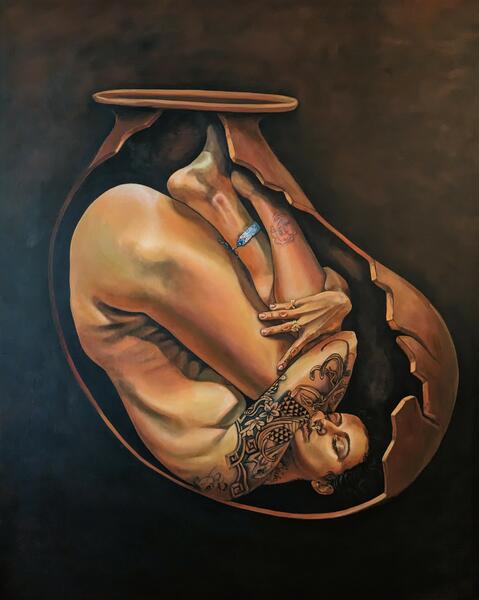 Return to the Land (2023)
Return to the Land (2023)Jessy DeSantis
Return to the Land, 2023
Acrylic on canvas
48”x60”
In spring 2021 I had a vision while I traveled to San Francisco for an exhibition I was in called “Caravana: Mobilizing Central American Art (1984 - Present) at SOMArts. I was staying in Oakland the morning I had my vision. It was of my lifeless body being carried and placed into the ground. I was in a fetal position and I felt incredibly peaceful and at home, I felt I had returned to the land. I knew the vision was both symbolic and a homecoming. I felt closer to my homeland of Nicaragua being on the West Coast traveling from my home in Baltimore. I’ve also reconnected to my truth, that we come from the land, we are the land, and we are incredibly disconnected from it. Meaning we are disconnected from ourselves.There is a reason psychologists call it “grounding exercises” when we spiral into an anxious wormhole and need to remain in the present. I recall one exercise where you picture yourself standing on the grass, growing roots into the land from your feet to keep you from drifting. We’ve grown up in a society that hasn’t ground but concrete, that has disconnected us from who we are.
Outside of relational trauma, the weight of the world, hopelessness and powerlessness I felt being trapped in this society under capitalism led me into a deep depression. I came up with my own grounding mantra I’d like to share with you: “I was here before, and I will be here after”. I’m of the land, a continuous transfer of energy, my evolutionary being, my home, myself, I am the earth. And so are you. This fundamental scientific internal truth is a communal truth. What is real and healthy versus what is fabricated and unhealthy for the earth, is also healthy and unhealthy for us.
I write this still on my journey to reconnect and learn the truths of who we are outside of this unnatural society under capitalism. I’ve thought about revolutions, about my existence coming from one in Nicaragua, but I never thought about the internal revolution that needed to take place. Return to the Land is both, this art piece is internal, it’s mental and it’s spiritual.
In the painting, I am in fetal position buried in a pre-Columbian urn shaped as a womb. These ancestral urns were unearthed in Managua, Nicaragua where loved ones were buried in urns shaped as a womb, returning to the land the way they came. The urns were uncovered during construction of a baseball stadium in Nicaragua's capital city where my family is from. The urns are believed to be over 1,000 years old.
-
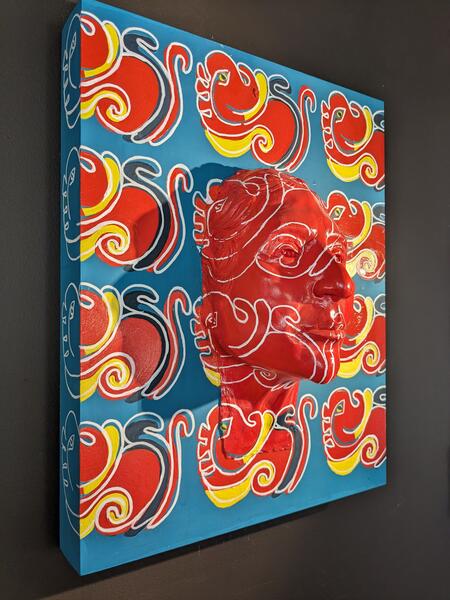 Adela (2023)
Adela (2023)Jessy DeSantis
“Adela”, 2023
Clay, Wood, Acrylic, Marker
16”x20x6.5”
Art description: I used air dry clay to sculpt a portrait of my mother. We live together, so she sat for me as a reference. When she wasn’t around, I used photos as references. This sculpture tells her story of eternal love and pays homage to her ancestral Nicaraguan roots.
-
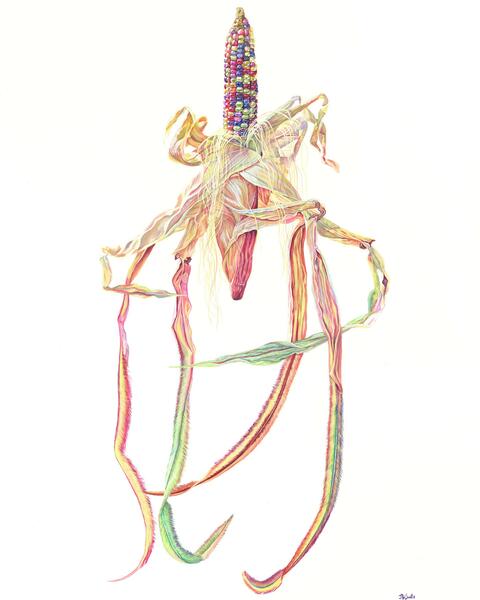 Cintil Corn Maiz
Cintil Corn MaizJessy DeSantis
“Cintli, Corn, Maíz”, 2020
Acrylic on canvas
36" x 48"
Covid-19 brought grief to our family, whether it was losing loved ones, the fear of it, or the endless list of activities and community we took for granted. One thing I can say that has come with this grief was a reconnection to land, my ancestral foods through gardening and the communal experience of planting and harvesting with my family. This painting is of corn we grew in our garden, the element of magical realism being the corn husk and leaves that turn into Quetzal feathers. I can't fully explain how it felt to grow this, but it felt like something I didn't know I had longed to do. Corn was domesticated over 9,000 years ago in Meso-America, and is a food I grew up eating being Nicaraguan. I didn't plan to grow corn to paint it, but to learn our nixtamalization process in which we make masa for nacatamales or tortilla. This process (and in context to the pandemic) has also led me to learn more about food sovereignty and to question our current reliance on foods and the injustice and exploitative systems in place. Once again I have shifted my focus on food. Before I completed this painting, I painted a mural on a local community fridge in Baltimore. That was the first time I painted corn. Following the history of foods and the etymology of words are some of the ways I have learned about my own history. I named this piece in three different languages for corn relevant to me: Nahuatl, English, and Spanish-Taíno.
About Jessy
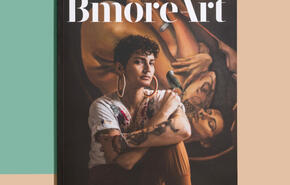
Raised in a Nicaraguan household in Miami, FL and now residing in Baltimore City, Jessy DeSantis is a self-taught artist creating meaningful, vibrant work. Their painting's stark contrast of vibrant color and white space draws the viewer into their subjects. They are inspired by their connection to nature, food, family, and their Central American roots. Their paintings, often depicting birds, are more than just visually beautiful, many carry in them intention with a story to be told. They… more
Baltimore Cacao (2023)
This collaborative project between Jessy DeSantis, Harold D. Morales, and Jinji’s Chocolate explores the Maya roots of cacao practices with a focus on celebrating our relationships with land and ancestors.
The project grows from previous collaborations between Jessy and Harold, including on a Popul Vuh sharing+listening reading group that was a part of Morgan’s Center for Religion and Cities' work to Indigenize the Baltimore City Curriculum. Drawing on this Maya creation story, Jessy and Harold continued their research with a focus on indigenous celebratory and artistic practices around cacao. The aim of this work was to nurture and grow our decolonial tools and practices by collaboratively creating and curating a series of paintings for the grand opening of Jinji’s Chocolate.
Bios
Jessy DeSantis (they/them) is a self-taught artist, curator, and historian of the Nicaraguan diaspora. They are also a mother of two young children. They began painting Baltimore city scapes with added cultural elements in what they call magical realism. They focus on storytelling, inspired by their ancestral roots. They've focused on food, flora and fauna, and most recently portraiture. They seek to pass these stories down to their children and to generations to come. Bmoreart magazine recently published an article on Jessy written by Ellen Hoobler, PhD, curator of the Americas for the Walters Museum.
Harold D. Morales (he/them) is a parent of two, wanderer in search of magic and insights for moving more gracefully through change, and an Associate Professor in the Department of Philosophy and Religious Studies at Morgan State University. Their work is largely inspired by their family's spiritual roots in Central America and diaspora experience in Los Angeles and now Baltimore. Their research and teaching focus on in-between spaces, including between race-religion, lived-mediated experience, and academic-public knowledge production. Dr. Morales currently serves as founding and executive director of Morgan’s Center for Religion and Cities and pursues several other creative and artistic works.
-
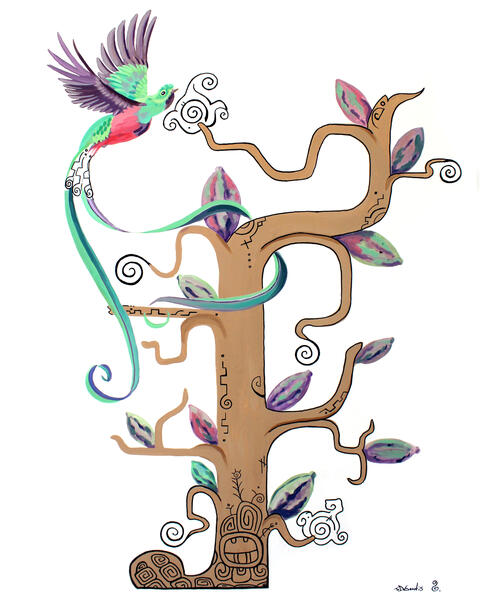 Alchemy of Joy (2023)
Alchemy of Joy (2023)This collaborative project between Jessy DeSantis, Harold D. Morales, and Jinji’s Chocolate explores the Maya roots of cacao practices with a focus on celebrating our relationships with land and ancestors. The project grows from previous collaborations between Jessy and Harold, including on a Popul Vuh reading group that was a part of Morgan’s Center for Religion and Cities' work to Indigenize the Baltimore City Curriculum.
-
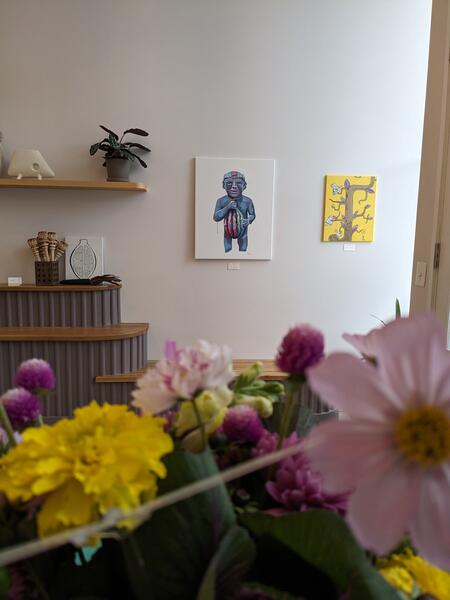 Jinji Chocolate, Baltimore Art
Jinji Chocolate, Baltimore Art -
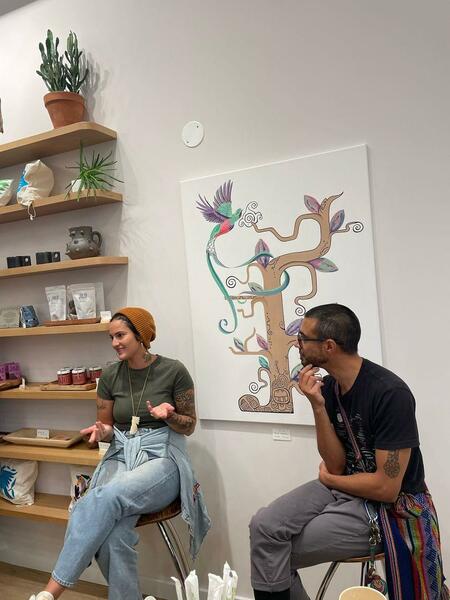 Artist Talk with Jessy and Harold about Cacao!
Artist Talk with Jessy and Harold about Cacao! -
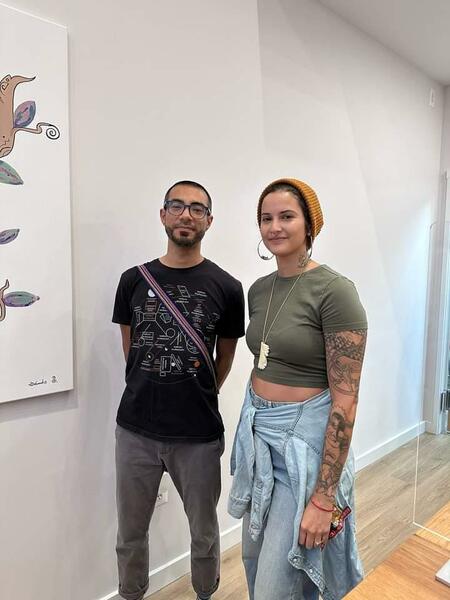 Jessy and Harold at Jinjis Chocolate
Jessy and Harold at Jinjis Chocolate
Community Fridge Mural
https://www.cbsnews.com/baltimore/news/baltimore-community-fridge-serves-greenmount-west-neighborhood/
https://hub.jhu.edu/2022/01/28/baltimore-community-fridge/
https://www.wbaltv.com/article/baltimore-city-community-fridges-help-fight-food-insecurity/37201928
https://baltimorefishbowl.com/stories/food-as-a-love-language-community-fridge-gets-upgrade/
